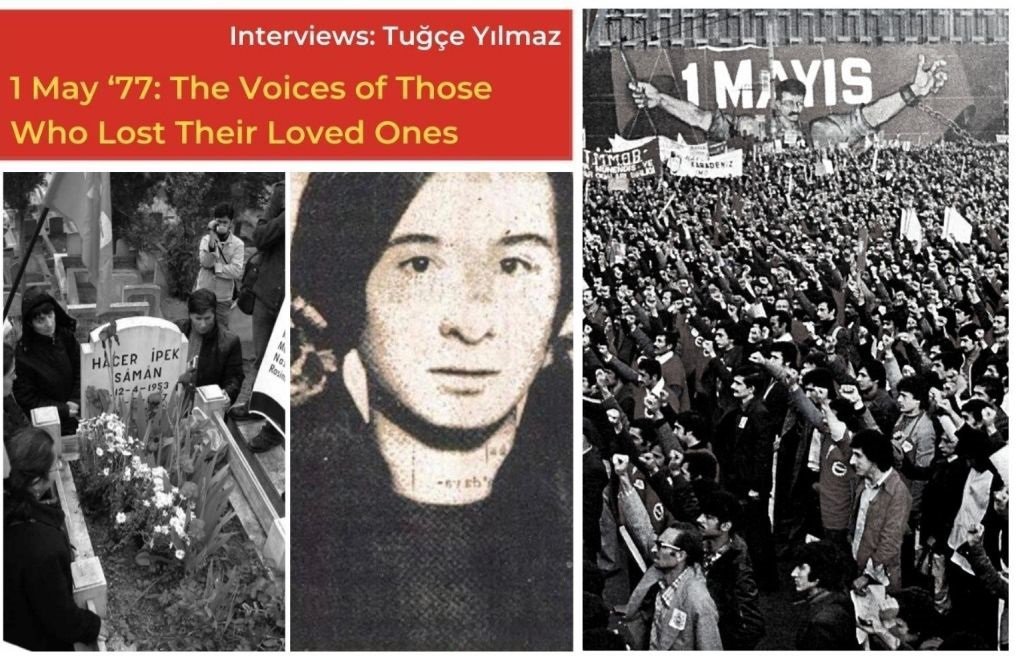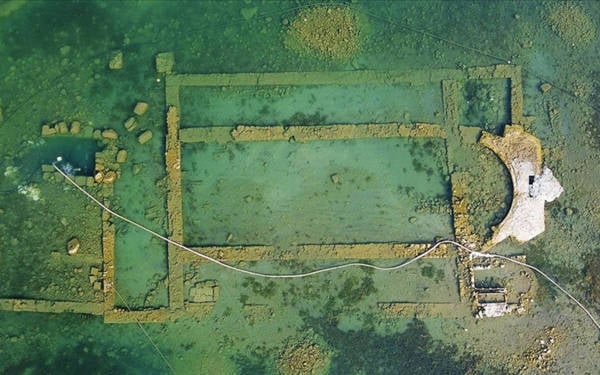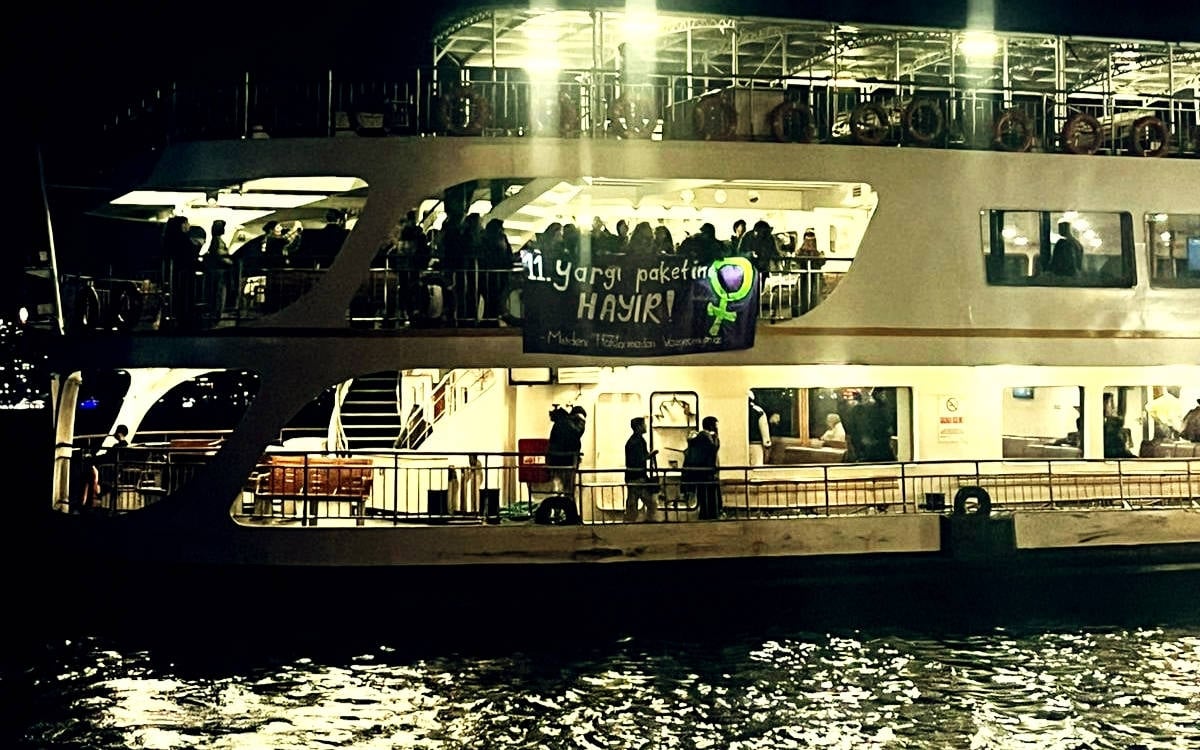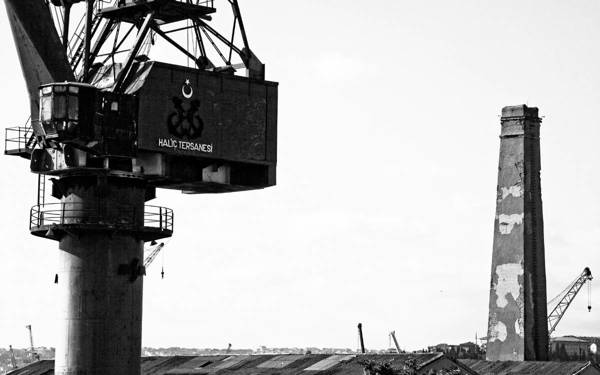Click to read the article in Turkish
Hacer İpek Saman was a university student, born in 1953.
When she was killed on 1 May 1977, she was in her final year of study in the Faculty of Pharmacy at Istanbul University. Had she lived, she would have graduated in 1977.
According to the autopsy report, the cause of Hacer İpek Saman's death was mechanical asphyxia due to compression of the abdomen and chest. The report also stated that the external cuts and bruising on her body may have been caused by falling or having been pushed to the ground.
Hacer İpek Saman was 24 years old when she lost her life on 1 May 1977. We were only able to find one photograph of her. There was a certain purity to her, that seems to be visible even in her photograph, and that her friends too have repeatedly confirmed. They describe her as "a calm and quiet person." They remember her petite frame and her red, plaited hair. But they also remember the words of one of her friends from the group that published the magazine Halkın Yolu (People's Path): "Don't be fooled by how calm she seems."
Theatre group
A death notice for Hacer İpek Saman was published in the newspapers. It was submitted by her friends at the "Merhaba Gösteri Topluluğu" (Hello Performance Troupe), a theatre group to which Hacer İpek belonged. However, the troupe members I was able to reach unfortunately had no information on her, they only remembered seeing her a handful of times.
A Reader of Halkın Yolu (People's Path)
It was only 12 years ago that Hacer İpek's friends from Halkın Yolu were able to locate Hacer İpek Saman's grave in the Zindan Arkası Cemetery in Kulaksız. Her friends have gathered by her grave in commemoration each year ever since. One year they met her family there, but they later fell out of touch. Even though her boyfriend from back then now lives abroad, I learned that he visits Hacer İpek's grave every year.
I listened to Hacer İpek's story from her friends Mukaddes Erdoğdu, Hacer Elçin, and Talia Esenyel.
Mukaddes Erdoğdu, friend:
I went to the Çamlıca High School for Girls [Çamlıca Kız Lisesi] as a boarding student on a scholarship. Hacer İpek was like me; she lived in Istanbul but was enrolled as a scholarship boarding student too. We were not in the same class, in fact there was a year between us. I graduated a year after her. She graduated in the 1969-1970 academic year.
Modest
There was a group of scholarship boarders. But because we were in different classes, the groups weren't always close. But we were the permanent boarding students. Hacer İpek had her own group of friends. These were wealthier children than us, the children mostly of high bureaucrats I'm guessing. I would come across Hacer during break time or in the dining hall.
Hacer drew attention to herself immediately within her group of friends. Her group was fun and loud and when I come to think of it, they sort of looked down on the rest of us. But Hacer wasn't like that at all. Hacer was modest, down to earth, quiet.
Kind
She had red hair. And freckles on her face that really suited her. She didn't share the attitude of the girls in the senior year but was tolerant and kind to everyone.
Hacer got into the faculty of pharmacy after graduating from high school. I had a classmate who studied at the same faculty as Hacer. As the two of us talked about Hacer, we came to realise that she was just as quiet in university as she had been in high school. That's why her death on 1 May 1977 was so talked about at the university.
A friend from school once said, "She and Nazan were inseparable at university, she and Nazan went to the rally together that day." She was talking about Nazan Ünaldı. Nazan Ünaldı also died on 1 May 1977.
As members of People's Path [Halkın Yolu], People's Liberation [Halkın Kurtuluşu], and People's Unity [Halkın Birliği], we couldn't even enter the square that day. We had friends from the People's Path who knew her, but no one who knew Hacer was able to enter the square that day. In fact, people said that Nazan was marching with the People's Path. But how they managed to enter the square on their own, no one knows.
We only know that they went together and that they entered the square together. Perhaps they died together...
I had a friend, she was a lawyer who arrived at Selimiye Prison in the autumn of 1980, I had been there since the summer. She knew Hacer from university too, they'd stayed in the same dorm. She told me about a song, an elegy that was written for Hacer.
Now as members of the Socialist Women's Assemblies [SKM], we visit Hacer at her grave each year.
This is all the information I have to share, and I know it isn't much but because women are widely disregarded in politics and pushed aside, every bit of information about them is invaluable. I hope that as an outcome of this project, this information about Hacer will be recorded and become part of history.
Hacer Elçin, friend:
I didn't know Hacer that well. We were part of the same circle, the same magazine. We were comrades. She came to the Petroleum Chemical and Rubber Industry Workers' Union [Lastik-İş] strike a couple of times. Back then, students wanted to carry out joint initiatives with the working class. Hacer was one of them. She had red plaited hair. She was a student at the Faculty of Pharmacy.
Hacer was a very quiet person. I remember being in awe of how tranquil she was. She'd just look on, watching the men as they raised their voices and yelled at each other while debating amongst themselves.
Her grave was found 12 years ago
We didn't know where she was buried. I found her grave just 12 years ago. In the Kulaksız neighbourhood of Kasımpaşa [in Istanbul].
We asked the Cemeteries Directorate for help. They took out these huge books. We thought she would have been registered in the books on 2 May, 1977, so that's where we asked them to look. And we finally found her. Since then we visit and commemorate her every year on 1 May.
Her boyfriend visits every year
One year while we were visiting, her relatives were there too. They said they were close relatives. We chatted with them. I even took their numbers but I lost them. They told us that Hacer's boyfriend of the time was living in the US and that he came to Turkey every year to visit her grave. I was moved.
Her family was touched to see us there. During the commemoration I raised my fist, and then looked around to see that a few other women had joined me. It was an incredible moment, I can't describe it.
She was a militant
I only saw Hacer a couple of times, but I can say this much about her: She was extremely intelligent. She was a student at the Faculty of Pharmacy, which itself says something.
Hacer was a reader of Halkın Yolu. I don't know what sort of family she came from. I know that she was devoted to the struggle. Another friend from the magazine circle, Mehmet, who is also a relative of mine, once said about her: "Don't be fooled by her calm and quiet appearance, she is a militant comrade."
My comrade
I am grateful that Hacer was my comrade.
I would like to thank you for doing this work to track down these stories. No one from the press had contacted me about Hacer before. Your effort to highlight the stories of the women who lost their lives on 1 May 1977, and make those stories heard, is invaluable. And what's more, you're undertaking this 43 years after the fact. I am sure it means a lot to her comrades and her family that other people get to know Hacer and her story.
Talia Esenyel, friend:
Hacer and I didn't study at the same faculty, but we were from the same magazine circle. That's how I knew her. She was the kind of person who generally stood to the side and observed what was going on around her.
Hacer was a petite person. She had a calm disposition. I was often quite loud for example, that may be why her calmness has stuck in my memory. She usually plaited her hair.
The Faculty of Pharmacy was largely populated by leftists. There were very few right-wingers.
On 1 May 1977, we made our posters and completed all our other preparations. We gathered at the park in Saraçhane, under the flag of the People's Path. Hacer was at the back. We arrived at the park early and waited there for about two or three hours. I remember how excited everyone was when we started marching; people were greeting us from their balconies, and applauding us. It was this remarkable feeling of excitement. And that was so important. People were inviting revolutionaries into their homes.
Severely injured
Then we heard Hacer had been shot. She was taken to the hospital by a rally steward, and that's where she died. I think she was shot in the head. Her body had been severely injured. I remember there was blood on the outside of the coffin as it was being carried. Blood was dripping from the coffin. It was extremely upsetting.
The funeral wasn't all that crowded, but there was still a good number of us. There weren't that many people because so many had been taken into custody the day after the First of May rally, and others had to go into hiding. Still, it was a decent-sized crowd. But the people, the public didn't greet us with the same enthusiasm as they had on 1 May. They were more anxious now. We marched to the cemetery and buried Hacer there. We had a lot of friends who knew her well but most of them were arrested and we lost touch, or some of them moved abroad. And then we had other friends who also lost their lives.
A silent hero
I am deeply touched that you contacted us in order to write Hacer's story. Because the 70's have heroes, but the generation of '78 doesn't have its own particular hero. The organisation was a huge one, but the real subject of '78 was the people. For Hacer to be remembered as a hero today would make me immensely happy. Because Hacer was just that, a silent hero. (TY/NÖ/VK)
About Tuğçe YılmazJournalist, editor, researcher. "1 May 1977 The Voices of Those Who Lost Their Loved Ones / 1 May 1977 and Impunity" she was engaged in this dossier as a researcher, reporter, editor and writer. Her articles, interviews and reports are published in outlets such as bianet, BirGün Book, K24, 5Harfliler, Gazete Karınca and 1+1 Forum. She graduated from Ege University, Faculty of Literature Department of Philosophy. She was born in Ankara in 1991. |
 |
| This text was created and maintained with the financial support of the European Union provided under Etkiniz EU Programme. Its contents are the sole responsibility of "IPS Communication Foundation" and do not necessarily reflect the views of the European Union. |
CLICK - 1 May 1977 e-book is online
The ones who lost their lives on 1 May '77The ones whose loved ones we could talk to: Ahmet Gözükara (34, teacher), Ali Sidal (18, worker), Bayram Çıtak (37, teacher), Bayram Eyi (50, construction worker), Diran Nigiz (34, worker), Ercüment Gürkut (27, university student), Hacer İpek Saman (24, university student), Hamdi Toka (35, Seyyar Satıcı), Hasan Yıldırım (31, Uzel worker), Hikmet Özkürkçü (39, teacher), Hüseyin Kırkın (26, worker), Jale Yeşilnil (17, high school student), Kadir Balcı (35, salesperson), Kıymet Kocamış (Kadriye Duman, 25, hemşire), Kahraman Alsancak (29, Uzel worker), Kenan Çatak (30, teacher), Mahmut Atilla Özbelen (26, worker-university student), Mustafa Elmas (33, teacher), Mehmet Ali Genç (60, guard), Mürtezim Oltulu (42, worker), Nazan Ünaldı (19, university student), Nazmi Arı (26, police officer), Niyazi Darı (24, worker-university student), Ömer Narman (31, teacher), Rasim Elmas (41, cinema laborer), Sibel Açıkalın (18, university student), Ziya Baki (29, Uzel worker), The ones whose loved ones we did/could not talk to: Aleksandros Konteas (57, worker), Bayram Sürücü (worker), Garabet Akyan (54, worker), Hatice Altun (21), Leyla Altıparmak (19, hemşire), Meral Cebren Özkol (43, nurse), Mustafa Ertan (student), Ramazan Sarı (11, primary school student) The ones only the names of whom are known: Ali Yeşilgül, Mehmet Ali Kol, Özcan Gürkan, Tevfik Beysoy, Yücel Elbistanlı The one whose name is unknown: A 35-year-old man |
The voices of those who lost their loved ones: 1 May '77 and impunity
Political panorama of Turkey-1977
Film industry worker Rasim Elmas, 41, died in Taksim
Construction Worker Bayram Eyi, 50, died in Taksim
Teacher Bayram Çıtak, 37, died in Taksim
High School Student Jale Yeşilnil, 17, died in Taksim
Teacher Kenan Çatak, 31, died in Taksim
Teacher Ahmet Gözükara, 33, died in Taksim
Teacher Hikmet Özkürkçü, 39, died in Taksim
Student-laborer Niyazi Darı, 24, died in Taksim
University student Nazan Ünaldı, 19, died in Taksim
Teacher Ömer Narman, 31, died in Taksim
Laborer Ali Sidal, 18, died in Taksim
Counterperson Kadir Balcı, 35, died in Taksim
Student Hacer İpek Saman, 24, died in Taksim
Factory Worker Kahraman Alsancak, 29, died in Taksim
Laborer Hüseyin Kırkın, 23, died in Taksim
Student Ercüment Gürkut, 26, died in Taksim
Public order police officer Nazmi Arı, 26, died in Taksim
Laborer Mahmut Atilla Özbelen, 26, died in Taksim
Factory worker Hasan Yıldırım, 31, died in Taksim
Itinerant salesperson Hamdi Toka, 35, died in Taksim
Security Guard Mehmet Ali Genç, 60, died in Taksim
Factory Worker Ziya Baki, 30, Died in Taksim
Laborer Mürtezim Oltulu, 42, Died in Taksim
Teacher Mustafa Elmas, 33, Died in Taksim
Student Sibel Açıkalın, 18, died in Taksim
Laborer Diran Nigiz, 34, died in Taksim
1 May 1977 & Impunity
'The state is implicated in this crime, perpetrators must be put on trial'
'If you can't find the killers, you can't remove the stain'
'The perpetrators of the 1 May 1977 massacre got away with it'
Remembrance as a matter of dignity and the fight against impunity
Who is hiding the truth and why?










